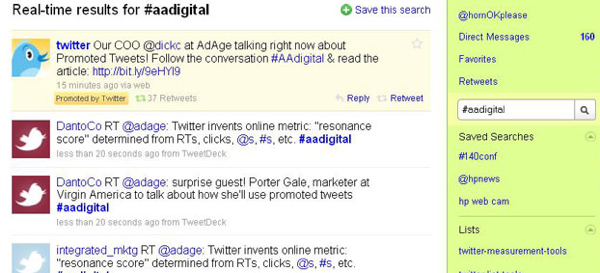While most websites these days create content and profit from display advertising, the realization that has taken center stage is that display advertising can never be as effective as it previously was. Sure, display advertising generates tons of money for publishers and is still seen as an effective medium for marketers to deliver their message, but, with time, that will come to an end.
Traditional advertising deems it necessary to interrupt the viewing experience of content to spread a message — which is what display advertisements do — but people these days don’t have the time to bother with it and/or are becoming immune to it. With such an incredible amount of volume of advertisements being presented to people, it is no wonder why their effectiveness has decreased so heavily.
Think about it for a moment: when was the last time you intentionally clicked on an advertisement because you had genuine interest in the actual product that was being advertised?
My last occurrence was during one of Pespi’s Mountain Dew campaigns for selecting your favorite flavor of soda. I was, at the time, an avid drinker of Mountain Dew, and, as a result, I clicked on an advertisement to participate in the voting of my favorite flavor. I didn’t mind, as I had given the product permission to talk to me. But that was several years ago. Beyond that, no Internet advertisements have really been effective at getting me to click (not even those stupid ads that disguise themselves as games).
We would even understand if you were under the impression that you have never clicked on an advertisement intentionally. Or, then again, maybe you click on advertisements avidly. However, we will assume, for the sake of this article, that most tech-savvy individuals these days take measures to avoid advertising. We don’t blame you, especially with the poor quality of ads that is regularly displayed, even with the help of AdSense.
Either way, it is a well-known fact that people nowadays have a general distaste for advertising, on the Web or through traditional media formats.
Ads Suck
That’s bad enough, true; however — to the displeasure of advertising agencies — it is now becoming easier than ever to filter the type of information you receive. A few minutes of effort could enable users to block many of today’s advertising campaigns: from ad blocking extensions to fast-forwarding DVRs. These types of advertisements can easily be skipped, ignored, or simply disregarded immediately.
This brings us to an important point: the time of interruption advertising (like display advertising) has past. It can never be as effective as it once was, no matter how cute advertisers attempt to get with locations, demographics, formats, and specifics.
Seth Godin, a true mastermind in all things marketing, eagerly points out the failure of “interruption marketing” in his books and blogs. He states that in order to sell your products to the people, the products themselves must be remarkable and the advertising aimed at people must be genuine and personal. In a sense, Godin makes it seem like there is no longer advertising. There is sharing and interest, and consumers are only truly listening to the messages of the companies that they like (or have been given permission to do so).
Adapt or Die
While all that sounds bad for those attempting to make money from the Internet, the solution is, in theory, quite simple: it’s called adaptation. It’s something that all of us have had to do to stay competitive in today’s world. The degrading economic conditions, shortening attention spans, and changing technologies calls for this type of mentality.
The execution of this adaptation, however, is another issue altogether.
We are only human, and we can’t do much about the economy nor attention spans. But what we can do is adapt to technology. This is where that imaginary lightbulb in the brain turns bright. Our most important technological improvements in the past decade have come from the Internet. More specifically, it comes from the way we can find, share, and discuss information.
This very technology is the same that has brought the newspaper industry to its knees and is tore it to shreds, especially with the creation of Craigslist and content management systems that enabled blogs to be published easily.
Now, sites like Twitter and Facebook come to the forefront of the discusson. They take the center stage as communication platforms that enable people to spread the message about the products and services they love most, and they do it in near real-time. They also take precedence in people’s lives, complimenting blogs and, in some cases, replacing them as their main stream of information. Look no further than a guy like Robert Scoble.
Essentially, it is possible that Twitter and Facebook could do to blogs what blogs did to newspapers: a simple case of history repeating itself. But it is also disrupting other advertising mediums and reducing the effectiveness of advertising in general.
The new mediums of advertising are becoming the places where conversations of everyday life take place. Twitter, for example, is a quality location to involve advertisers, where the advertisement becomes part of the content and the conversation. It is much easier to interact with and to disregard, not forcing the user to notice it — which could, ironically enough, prove to be far more effective.
While there is a fine line between advertisement and content (as it is unfair to attempt to trick users), it is the direction we are headed. We will likely see a resurgence in pay-per-post, paywalls, products, and consulting gigs making a comeback as display advertising weakens.
But we are already seeing advertisers moving to explore different types of media as marketers become more intelligent and aware about social media. It is quite nice to see an advertisement on a site that doesn’t serve its sole purpose to make a sale, but, instead, it helps the users instead.
There is, however, no certainty to the future of advertising and the effectiveness it might hold. There are new opportunities available to be explored, but it will take time for advertisers to find them. But it is certain that the current way of doing things is not necessarily the best way.
Yet there is one question I can’t answer: if advertising supports free content but display ads are rendered ineffective, what is left to support free content?
That’s another discussion altogether.





GIPHY App Key not set. Please check settings
One Comment